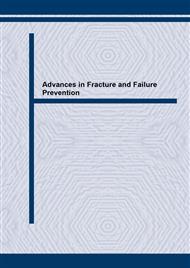p.225
p.231
p.239
p.245
p.251
p.257
p.263
p.269
p.277
Influence of Imperfect Interface on the Propagation of Love Waves in Piezoelectric Layered Structures
Abstract:
Layered structures, especially thin film/coating substrate system play important roles in micro-electro-mechanical system (MEMS) and microelectronics packages. Many surface acoustic wave (SAW) devices/sensors adopt the layered structures to achieve high performance that with a piezoelectric layer deposited on the substrate. Recently, much work has been carried out concerning the propagation behavior of surface waves in piezoelectric layered structures, in which the piezoelectric layers are bonded perfectly with the substrate materials. Actually, due to the thermal mismatch, the unavoidable initial stress in the piezoelectric layer and the brittleness nature of piezoelectric ceramics, imperfections exist in the interfaces of these layered structures. Due to the penetration properties of surface waves, the imperfect interfaces may influence the propagation behavior of surface waves. Up to now, little attention has been paid to the propagation behavior of surface waves in layered piezoelectric structures that the imperfect interfaces are taken into account. The propagation behavior of Love waves in a piezoelectric layered structure with imperfect interface is taken into account. Solutions of the mechanical displacement and electrical potential function are obtained for the piezoelectric layer and substrate, respectively, by solving the coupled electromechanical field equations. Effect of imperfect interface on the phase velocity of Love wave propagation is discussed in detail. Results obtained indicate that imperfect interface can greatly influence the propagation of Love waves under some certain conditions. The potential application of these results in the field of mechanical behavior of materials is also shown.
Info:
Periodical:
Pages:
251-256
Citation:
Online since:
April 2004
Authors:
Price:
Сopyright:
© 2004 Trans Tech Publications Ltd. All Rights Reserved
Share:
Citation:


